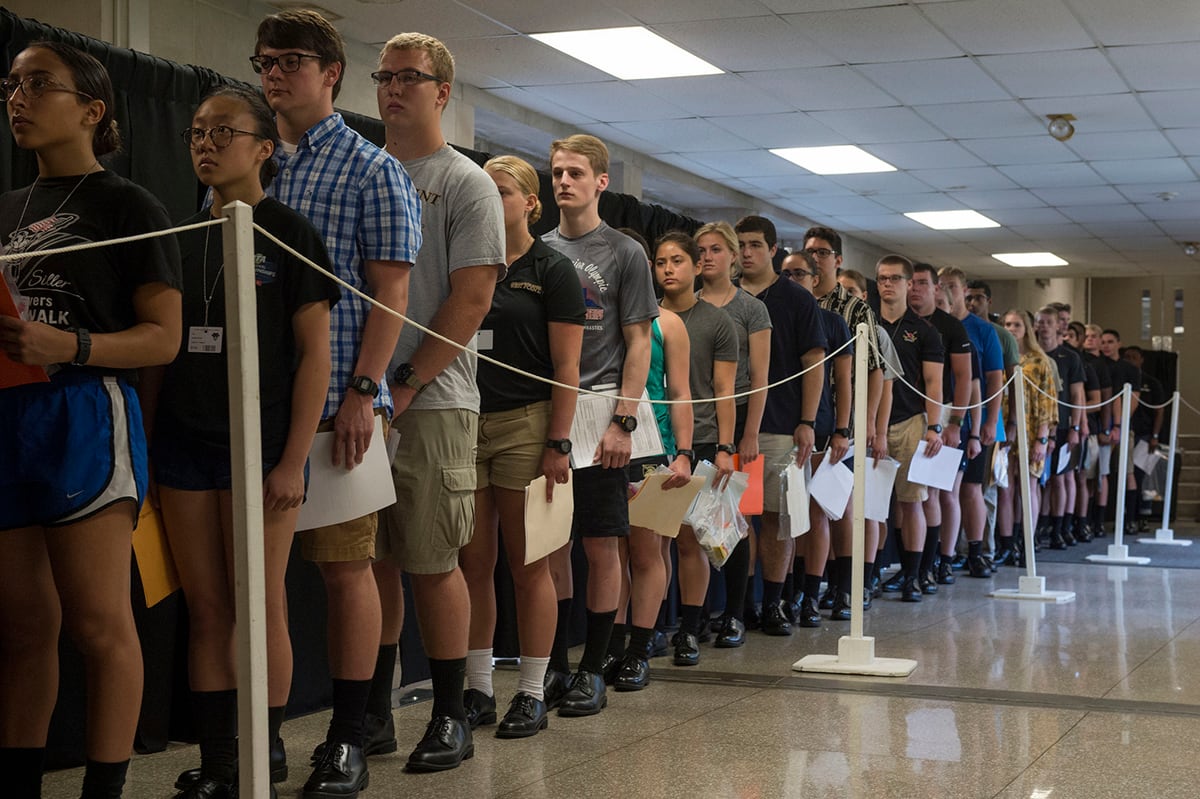Army Reserve and Guard members who chose the new Blended Retirement System and who will be eligible for continuation pay this year will see thousands of dollars more cash.
The Army has increased the continuation pay formula by eight times its previous rate for its Guard and Reserve members. The change doesn’t apply to Army active duty members, nor does it apply to any of the other branches of service. The service branches make their own decisions regarding this particular benefit, based on their retention needs.
“I would personally view [the continuation pay increase] as a force retainer,” said Kevin Hollinger, legislative director for the Reserve Officers Association. He noted the active duty Army component met its retention goals early, but the Army Reserve and Guard failed to meet their retention goals in 2018.
About 1,500 members of the Army Reserve and 983 members of the Army National Guard will be eligible for continuation pay this year, under the Blended Retirement System, or BRS. They’ll see continuation pay at the rate of 4.0 times their monthly pay (calculated as if on active duty.) Previously, it was a multiplier of 0.5 percent at the 12 year mark for continuation pay.
What does that mean for members of the Army Guard and Reserve? For an E6 meeting the requirements, it means $13,562 more this year.
Under the previously announced multiplier of 0.5 times the monthly basic pay, that E6 would have received $1,937.40 (0.5 times $3,874.80). Now that jumps to $15,499.20, (4 times $3,656.40.)
The Army also changed the time frame for Army Reserve members to be eligible for the continuation pay. Army Reserve members are eligible when they reach 11 years of service. For Army Guard members, it’s still 12 years of service.
An estimated 1,500 members of the Army Reserve will hit the 11- or 12-year mark this year. Since the eligibility timing was changed at the end of last year, reservists hitting the 12-year mark this year will still be eligible. There are 983 Army National Guard members who either have or will reach the 12-year mark this year.
Officials estimate the cost of the continuation pay for Reserve members if every eligible member takes it would be roughly $20 million, under the new multiplier, including members of the AGR, whose multiplier remains at 2.5 as active duty members . The projected cost for the Army National Guard is about $14 million. Information wasn’t immediately available about how much higher these amounts are than the previous multiplier.
A recent RAND Corp. study found that those minimum multiplier levels of 2.5 for the active duty force and 0.5 for the Guard and Reserve are sufficient to support retention for enlisted personnel, but not for officers in each component.
RELATED

For all Reserve and Guard members in the other branches of service who signed up for BRS, the multiplier remains at 0.5 times the monthly basic pay as if they’re on active duty, paid just before or exactly when they reach 12 years of service. For all active duty members, including AGR, the multiplier remains at 2.5 times monthly basic pay.
Continuation pay is part of the BRS, as a one-time bonus payment that’s in addition to any other career field specific incentives or retention bonuses. Continuation pay is taxable, but it can also be paid in a series of four equal installments not to exceed four annual payments over four consecutive years.
In order to get continuation pay, you must sign an agreement to serve for four more years.
Here’s the tricky part:
To qualify for continuation pay at the “over 12 years of service” rate, you must sign the agreement precisely on the actual date of 12 years from your Pay Entry Base Date, or PEBD. If you sign it one day later, you’re not eligible for continuation pay. If you sign it before reaching 12 years, you’ll be paid continuation pay based on the “over 10 years of service” rate.
Each branch of service determines the rates of continuation pay, and the timing for when it is paid. They determine the rates for each calendar year, so they could fluctuate each year based on the retention needs of the services.
The BRS continuation pay increase implemented by the Reserve Component for 2019 “is used as an approach to help the Army Reserve meet overall retention goals and readiness objectives," said John Bradley, spokesman for the U.S. Army Reserve Command, noting that soldiers who receive this benefit agree to serve another four years. .
“It doesn’t surprise us that there are differences in how this is being applied,” said Shane Ostrom, a retired Air Force lieutenant colonel who is program director for finance and benefits information for the Military Officers Association of America. “They’re basing it on their force structure requirements.”
Karen has covered military families, quality of life and consumer issues for Military Times for more than 30 years, and is co-author of a chapter on media coverage of military families in the book "A Battle Plan for Supporting Military Families." She previously worked for newspapers in Guam, Norfolk, Jacksonville, Fla., and Athens, Ga.




